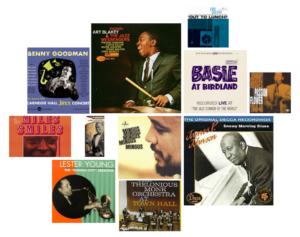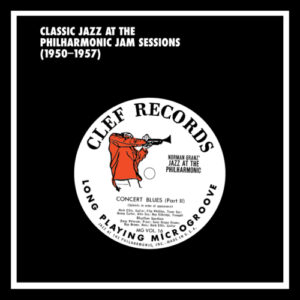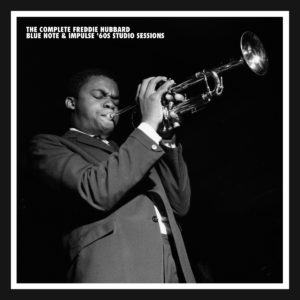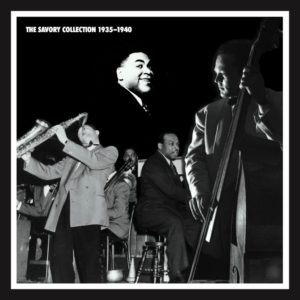Clifford Brown
"Not that it necessarily follows that one who plays that beautifully is also a marvelous person, but I think one can discern in Clifford Brown’s case that the particular kind of extraordinary playing was linked to an equally special human being." - Ira Gitler
Clifford Brown
Clifford Brown’s prodigious technique is always totally integrated with the content of his playing. His sound is buttery when it is supposed to be, in his role as nonpareil balladeer; hard and brilliant when he moves into overdrive on the up-tempo poppers. Rhythmically he danced; tonally he sang.
By Ira Gitler
Clifford Brown was born in Wilmington, Delaware on October 30, 1930. His father played trumpet, violin and piano as a hobby and, as a young boy, Clifford Brown was fascinated by the trumpet. When he was 13, his father bought one for him. ln junior high school he was tutored by Robert Lowery, a former professional musician who oversaw a student jazz group. He received a music scholarship to the University of Delaware which, ironically, had no music department.
During Clifford Brown’s time at the University of Delaware he met Fats Navarro in Philadelphia and received praise from the trumpeter. ln 1949 he sat in with Dizzy Gillespie’s orchestra and impressed Gillespie. ln 1951 he played briefly with Charlie Parker in Philadelphia and another giant was added to the Clifford Brown fan club.
Gillespie had told Max Roach about him and Parker hipped Art Blakey. Clifford Brown would eventually play with both men, but first in ‘1953, he joined the nine-piece band of master arranger-composer Tadd Dameron. He did the summer season that year with Tadd at an Atlantic City, New Jersey night club but also found time to do three more sessions for Blue Note; one with Lou Donaldson, one with J. J. Johnson and another under his own leadership.
ln the fall, he joined Lionel Hampton‘s orchestra for a European tour that took him to France, Sweden, and Denmark. He recorded (away from the band) in Paris, Stockholm, and Copenhagen. On his return to New York in November, Brownie began freelancing. ln time he began playing with Art Blakey and in early 1954 took part with the drummer in the famous live recording for Blue Note at Birdland.
At the same time Max Roach had gone out to California to work with the Lighthouse All Stars in the Los Angeles area. ln the spring, promoter-deejay Gene Norman asked him to put a band together for a tour. Max went back to New York and hired Clifford Brown. lt was the beginning of an association between the two co-leaders that would last until that fateful June 26, two years later. ln these years Clifford Brown reinforced and further enhanced his already considerable reputation.
When the car carrying Clifford Brown, pianist Richie Powell and Powell’s wife skidded off the road and hurtled into a culvert, Brownie’s star was still in the ascendancy. Although his place in the sun lasted but a short time, his place in the musical firmament is everlasting.
– Ira Gitler, liner note except Mosaic Records: The Complete Blue Note And Pacific Jazz Recordings of Clifford Brown #104
BROWNIE SPEAKS
THE LIFE, MUSIC, & LEGACY OF CLIFFORD BROWN
Trailer of a feature-length documentary presents a richly detailed account of Clifford Brown’s life, and examines his historical importance in the context of three criteria–innovation, influence, and individuality.
“l’m sorry I never got to know him better. Not that it necessarily follows that one who plays that beautifully is also a marvelous person, but I think one can discern in Clifford Brown’s case that the particular kind of extraordinary playing was linked to an equally special human being.
You only would have had to hear Max Roach, Art Farmer, Sonny Rollins, or Gigi Gryce talk about him to substantiate this view. Photographs of Clifford Brown reveal some of that inner self; the shots in which he is depicted in a playing attitude show his intensity, that utter concentration and total connection with his instrument.” – Ira Gitler
Brownie Speaks
Clifford Brown, (tp), Lou Donaldson (as), Elmo Hope (p), Percy Heath (b), Philly Joe Jones (d) June 1953
The four-CD Pacific Jazz set (which has the same music as the earlier five-Lp Mosaic box called The Complete Blue Note/Pacific Jazz Clifford Brown) begins with the first jazz recordings that Brown made. On June 9, 1953, the 22-year old trumpet co-led a Blue Note session with altoist Lou Donaldson. On such numbers as “Brownie Speaks,” “Carving The Rock,” and one of pianist Elmo Hope’s finest compositions “De Dah,” Clifford Brown sounds very much like a veteran trumpeter. His maturity is particularly apparent on the ballad “You Go To My Head.”
13 days later, Clifford Brown was one of the stars with trombonist J.J. Johnson’s sextet, particularly on an up-tempo “Get Happy.” On Aug. 28 he was the leader of his own sextet which also includes altoist Gigi Gryce, Charlie Rouse on tenor, pianist John Lewis, bassist Percy Heath, and drummer Art Blakey. If there was any doubt that Brownie was already one of the great jazz trumpeters, his playing on “Cherokee,” Quincy Jones’ “Brownie Eyes,” and “Easy Living” by themselves prove his mastery.
The other two sessions on the reissue are from 1954 and both contain a great deal of worthy music. The July-Aug. project in Los Angeles features the trumpeter with a group of West Coast cool jazz musicians. Joined by Stu Williamson on valve trombone, tenor-saxophonist Zoot Sims, baritonist Bob Gordon, pianist Russ Freeman, drummer Shelly Manne, and either Joe Mondragon or Carson Smith on bass, Brown’s warm trumpet is framed by the excellent arrangements of Jack Montrose including on two of Brownie’s best originals (“Joy Spring” and “Daahoud”). The latter songs would have more famous recordings made with Max Roach a month later but these performances were their debut.
Rounding out the essential box set is an extensive Feb. 21, 1954 set with Art Blakey that was recorded live at Birdland. Although it predates Blakey’s Jazz Messengers and Brown was never a member of the group, these 14 performances are sometimes thought of as the beginning of that band. Clifford Brown, Donaldson, pianist Horace Silver, bassist Curly Russell, and drummer Blakey certainly make for a very potent group on this bebop-oriented set with Brown being showcased on “Once In A While” and in inspired form on such numbers as “A Night In Tunisia,”The Way You Look Tonight,” “Wee Dot,” and “Confirmation.”
The Clifford Brown/Max Roach Quintet


© Mosaic Images; photographs by Francis Wolff (Clifford Brown & Max Roach)
By Bob Blumenthal
The Clifford Brown/Max Roach Quintet created one of the very greatest string of small-group recordings in jazz history, worthy of consideration alongside the Hot Fives and Sevens of Louis Armstrong and the quintets of Charlie Parker and Miles Davis.
The Clifford Brown/Max Roach story begins in early 1954, a point at which Max Roach had been a celebrated influence on other drummers as well as the general evolution of jazz for nearly a decade. Roach began gaining notice touring in Benny Carter’s band while still a teenager, and then gained acclaim as the leading drummer of the modern movement through an association with Charlie Parker that began in 1945.
Over the next eight years Roach’s stature grew as he recorded with a host of other emerging jazz artists (including Bud Powell, Sonny Stitt, Miles Davis and Thelonious Monk) and co-founded Debut, one of the first artist-owned labels, with Charles Mingus. Roach participated in the legendary bebop summit concert that produced the Jazz at Massey Hall recordings of 1953. Later that year, he relocated to the Los Angeles area, where he replaced Shelly Manne in the popular Lighthouse All Stars.
During his Lighthouse tenure, Gene Norman, a local concert producer and owner of GNP Crescendo Records, approached Roach about forming a working band. Roach knew immediately whom he wanted as a partner, a young musician he had first heard while touring in Philadelphia a few years earlier.
Clifford Brown and Max Roach found the remaining members of their quintet. They met tenor saxophonist Harold Land and bassist George Morrow at one of the many jam sessions held at the home of then-unknown saxophonist Eric Dolphy. Clifford Brown and Roach quickly realized that both Land and Morrow would be ideal sidemen in terms of musicianship, dedication and personality. A similar fit was found for the piano chair when Richie Powell arrived in Los Angeles as a member of Johnny Hodges’ small group.
By August 2, when the Clifford Brown-Max Roach Quintet entered a recording studio for the first time, it had coalesced into a magnificent creative ensemble. It had also secured a recording contract with EmArcy, a subsidiary of Mercury Records, and the affiliation proved invaluable to the group’s fortunes. These are the performances that comprise Clifford Brown and Roach, Inc. and the bulk of Clifford Brown and Max Roach.
Yet superior individual talents do not always mesh into great ensembles, and the Clifford Brown-Max Roach Quintet was without question one of jazz history’s greatest bands. It was at the forefront of trends, later described as hard bop, that have more widely been ascribed to the influence of the Jazz Messengers (formed later in 1954) and the Miles Davis Quintet (formed in late 1955). Not to take away from the importance of these immortal bands, but Clifford Brown and Roach were there first. – Bob Blumenthal, liner note excerpt Mosaic Records: The Clifford Brown & Max Roach Emarcy Albums (4 LPs)
Clifford Brown & Max Roach Quintet
Joy Spring
Clifford Brown (tp), Max Roach (d), George Morrow (b) Harold Land (ts), Richie Powell (p) August 1954
By Michael Cuscuna
Although he had only three years on the national jazz scene before his tragic death in an automobile accident in June, 1956, Clifford Brown managed to cast a large presence as a trumpeter and composer. His originals like “Minor Mood,” “Tiny Capers,” “Daahoud” and “Joy Spring” signified the arrival of a composer of substance with his own identity. Much like Benny Golson, he had an enormous melodic gift and structural sense. Most of the tunes that he introduced during his all too short recording career have become jazz standards.
The quintet that he co-led with Max Roach, a prototypical hard bop ensemble, was a suitable vehicle for his originals, as this first version of “Joy Spring” recorded in August 1954 on the band’s first album “Clifford Brown-Max Roach Quintet” demonstrates. The melody of this piece has a joyous, life-affirming feel.
Tenor saxophonist Harold Land takes the first solo and sets a bright, friendly tone that sustains throughout Clifford Brown’s and pianist Richie Powell’s solos. Clifford Brown’s clarion sound and magnificent articulation is evident in the first two bars of this (or any, for that matter) solo. Both horns dig in as they trade fours with Max Roach who then executes a remarkably melodic drum solo as only he could.
Clifford Brown
Selected Jazz Albums
By Scott Yanow
Clifford Brown Memorial (Original Jazz Classics)
The Complete Paris Sessions (BMG/Vogue)
The Paris Collection, Vol. 2 (Inner City)
The Clifford Brown Quartet In Paris (Prestige)
In 1953, Clifford Brown worked with Tadd Dameron and toured Europe as a member of Lionel Hampton’s Orchestra. The Dameron association resulted in one four-song record date (June 11, 1953) as part of a nonet next to such notables as altoist Gigi Gryce, tenor-saxophonist Benny Golson, and fellow trumpeter Idrees Sulieman.
That session forms the first half of Clifford Brown Memorial which also has Brown-co-leading a set with trumpeter Art Farmer that teamed them with a group of top Swedish All-Stars including altoist Arne Domnerus, baritonist Lars Gullin, and pianist Bengt Hallberg. Quincy Jones contributed the arrangements including “Stockholm Sweetnin’” (one of Jones’ most rewarding jazz compositions) and the uptempo “Lover Come Back To Me.”
The latter set is from the period when Clifford Brown toured Europe with Lionel Hampton. For reasons that are still unknown, Hampton did not want his sidemen to record while overseas. However many of his star players ignored that order and made many rewarding recordings. The feud resulted in the breakup of what was probably Lionel Hampton’s greatest big band.
While the only documentation of Hampton’s Orchestra are some live recordings that do not show off the unit at its best, Clifford Brown was busy in the recording studios, making nine sessions in Sept. 1953 including four under the leadership of Gryce.
Due to overlapping reissue programs, it can be difficult sorting out Clifford Brown’s European sessions but the BMG/Vogue, Inner City and Prestige sets do not duplicate each other. The former has Brown on Sept. 28 & 29 performing with a big band filled with Hampton sidemen and a few Europeans that is headed by Gryce. The two takes of “Keeping Up With Jonesy” are highlighted by a trumpet tradeoff by Clifford Brown and Farmer.
Also on this CD is a sextet co-led by Gryce and Clifford Brown that performs “Conception,” “All The Things You Are,” “I Cover The Waterfront” (which has another fine Clifford Brown ballad statement), and the trumpeter’s “Goofin’ With Me” (utilizing the chord changes of “Indiana”). The Paris Collection Vol. 2 is from Oct. 8 with the same sextet but, due to only having four songs (plus four alternate takes), is of lesser interest except for completists.
Best of all Clifford Brown’s Paris recordings is his quartet album of Oct. 15. Joined by pianist Henri Renaud, bassist Pierre Michelot, and drummer Benny Bennett, Brownie is very much in the spotlight throughout the six songs and six alternate takes. His statements on “It Might As Well Be Spring,” “The Song Is You” and “You’re A Lucky Guy” are quite classic, and he never runs short of creative ideas. Very few 22-year olds have ever recorded a full album on this level.
The Best Of Max Roach and Clifford Brown In Concert! (GNP):
In mid-1954, Clifford Brown went to Los Angeles to organize a quintet that he would co-lead with drummer Max Roach. The early version of the group also included tenor-saxophonist Teddy Edwards, pianist Carl Perkins, and bassist George Bledsoe. That quintet performed four numbers at a concert on July 13 that was captured and makes up half of the GNP (Gene Norman Presents) release including a heated version of “All God’s Children Got Rhythm.” By the time the group performed at a concert on Aug. 30 (which comprises the other half of this release), tenor-saxophonist Harold Land, pianist Richie Powell, and bassist George Morrow had become the group’s permanent members. They are outstanding on their four songs including on “I Get A Kick Out Of You” and “Parisian Thoroughfare.”
The Complete Emarcy Recordings Of Clifford Brown
Brown & Roach Inc. (Emarcy)
Clifford Brown and Max Roach (Verve)
Study in Brown (Emarcy)
The Clifford Brown/Max Roach Quintet signed with the Emarcy label soon after it had finalized its personnel. All of Clifford Brown’s recordings from mid-1954 on (except for his final live album) were made for that label and are included in the ten-CD Complete box set. Due to the consistent high quality of the music, this box is well worth searching for and acquiring. For those who cannot round up a copy of the box, fortunately many of its sessions are also available individually.
The Clifford Brown/Roach Quintet bridged the gap between bebop and hard bop. It was a perfect setting for Clifford Brown, who during 1954-56 ranked with the top trumpeters of the time including Dizzy Gillespie and Miles Davis. The original quintet recorded three studio albums. Brown & Roach Inc. includes “Sweet Clifford” (based on “Sweet Georgia Brown”), another rendition of the cooking “I Get A Kick Out Of You” and Clifford Brown’s ballad feature on “Ghost Of A Chance” among its more memorable performances.
The Verve CD has definitive versions of “Joy Spring,” “Daahoud” and “Parisian Thoroughfare” plus “Jordu,” and “The Blues Walk.” The trumpet solos from “Joy Spring” and “Daahoud” have been duplicated (and sometimes harmonized) by others in Clifford Brown tributes. Study In Brown from 1955 is most notable for “Cherokee,” the often-overlooked “Swingin’,” and Clifford Brown’s “Sandu,” another rewarding original.
Best Coast Jazz (Verve)
Dinah Jams (Emarcy)
Sarah Vaughan With Clifford Brown (Emarcy)
Helen Merrill with Clifford Brown & Gil Evans (Emarcy)
Clifford Brown With Strings (Emarcy)
During 1954-55, Clifford Brown also took part in a series of special recordings outside of the group with Roach. A studio jam session on Aug. 11, 1954 that included altoists Herb Geller and Joe Maini and tenor-saxophonist Walter Benton (partly released as Best Coast Jazz) includes an outstanding Brown solo on “You Go To My Head” and an uptempo blues (“Coronado”) that climaxed with the four horns trading four-bar phrases, then two-bar, one bar and finally two beats apiece before collapsing into an ensemble.
While Dinah Washington gets top billing on Dinah Jams from Aug. 14, 1954 and makes some appearances, this set is most notable for the trumpet section of Clifford Brown, Maynard Ferguson and Clark Terry and the remarkably rapid version of “Move.”
In addition to the Dinah Washington session, Clifford Brown was enlisted for albums featuring Sarah Vaughan and Helen Merrill, both of whom always hired the best musicians. The Vaughan date also includes flutist Herbie Mann and tenor-saxophonist Paul Quinichette and has brief but effective Brown solos throughout the set including on “Lullaby Of Birdland.”
The Helen Merrill recording with Brown has long been one of the singer’s personal favorites. The only other horn is flutist Danny Bank and Clifford Brown is practically a co-leader, having plenty of space to solo and accompany the singer including on “You’d Be So Nice To Come Home To,” “Yesterdays,” and “What’s New.”
In Jan. 1955, Clifford Brown was showcased on an album in which he was accompanied by a full string section arranged by Neal Hefti and a rhythm section. While I always thought that the string arrangements could have been a bit less predictable and more adventurous, Brownie’s playing throughout the set of ballads is quite beautiful, particularly on “Portrait Of Jenny,” “Memories Of You,” and Star Dust.” This is considered one of the best of the jazz with strings ballad albums.
At Basin Street (Verve):
In the fall of 1955, Harold Land had to drop out of the Clifford Brown/Max Roach Quintet to return to Los Angeles due to family commitments. His successor was Sonny Rollins, who at the time was the brightest young tenor-saxophonist in jazz. Rollins added even more power and fire to what was now a true super group.
The one studio album (from Jan.-Feb. 1956) by the band with Rollins is as outstanding as one would expect. On heated renditions of “What Is This Thing Called Love,” “Love Is A Many Splendored Thing” and “I’ll Remember April,” the band is so hot that one wonders how bassist George Morrow kept up, but he always did.
The Beginning And The End (Columbia/Legacy):
This album has the first and possibly the last recordings of Clifford Brown. It begins with the two numbers by Chris Powell’s Blue Flames in 1952 on which the trumpeter had a solo. The bulk of the collection was quite possibly performed on June 25, 1956, just hours before Clifford Brown’s death in the car crash. Later research has disputed the date, even suggesting that the music was performed on May 31, 1955, but there is no conclusive evidence yet.
If it did take place on June 25, Brownie certainly exited on top. He appeared at a jam session in Philadelphia and was in near-miraculous form. On “Walkin’,” he performs in a sextet with Ziggy Vines (who only made one other recording) and Billy Root on tenors, pianist Sam Dockery, bassist Ace Tisone, and drummer Ellis Tollin. Next is a blazing version of “A Night In Tunisia” with Root as the only tenor, and finally Brown is the only horn on a stunning rendition of “Donna Lee.” After the latter, Clifford Brown is heard telling the audience that he has to go.
Early the next morning, while riding in a car driven by Richie Powell’s wife and also including the pianist, the heavy rainstorm proved too much for Mrs. Powell and all three perished in the tragic car accident.
Clifford Brown’s legacy can be felt in his recordings, Benny Golson’s emotional ballad “I Remember Clifford,” and the playing of such later trumpeters as Lee Morgan, Freddie Hubbard, and Woody Shaw, all of whom had a bit of Brownie’s sound and the desire to try to equal his musical perfection.














